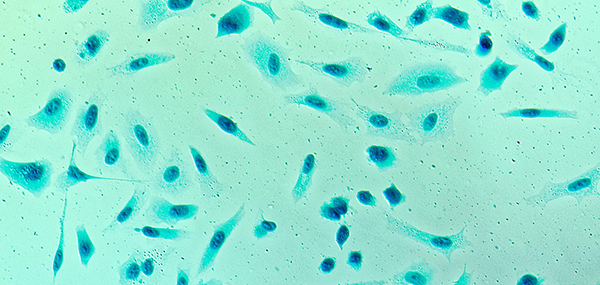Healthcare Made Non-Invasive
New technology and prototypes herald speedier, cheaper and less invasive medical tests.
When it comes to using medical tests to diagnose diseases or monitor health, it isn’t always enough for the test to be accurate. Cost, ease of use, speed and risk level all factor into the decision to administer any test.
Given the choice between an invasive and non-invasive test, chances are most people would pick the latter. An invasive test, requiring breaking the skin, is generally more expensive and risky. One such example, the amniocentesis test that draws amniotic fluid to diagnose chromosomal disorders like Down syndrome in a fetus, is accurate but has an associated risk of miscarriage in a small percentage of patients.
So while invasiveness and the associated risks can be considered an unavoidable aspect of many tests, that may be changing. In this article, we highlight three new technologies that may lead the way to non-invasive medical tests without sacrificing speed, accuracy or cost-effectiveness.

A Window to Female Fertility
Tracking female fertility using cervical secretions has long been a feature of natural family planning and fertility awareness. However, when done at home, this method relies entirely on a woman’s own ability to accurately detect changes in cervical secretions and interpret what it means for fertility. Unsurprisingly, this is not the most reliable measure — when cervical fluid-based fertility awareness is used as a contraceptive method, it is estimated that 23 out 100 women will become pregnant in the first year of typical use.
Now, a new non-invasive prototype device promises a more accurate way to track female fertility with cervical secretions. Replacing the self-diagnosis element with the combination of a biosensor and software, this device predicts fertility phases by interpreting changes in the physical properties of cervical secretions. Once a secretion sample is captured, the device’s biosensor tests its viscoelasticity, fluidity and crystallisation and uses in-built software to then analyse and estimate fertility phases, transitions, and crucially, the most fertile window in a woman’s cycle.
Besides its non-invasiveness, the device is positioned as a low-cost and easy-to-use method of fertility tracking that can also assist in related diagnoses and treatments.

Straight to the Heart
The narrowing of coronary arteries, or stenosis, has crucial implications for heart health and subsequent treatment. To assess the severity of artery stenosis, the fractional flow reserve (FFR) technique involves inserting a catheter into the artery in question and using fluoroscopy to measure the flow pressure gradient across the blockage.
A non-invasive option exists in the form of FFR using coronary computerised tomography angiography (CCTA), but this requires extensive post-processing and analysis that can often take more than 24 hours. Furthermore, CCTA is not as accurate as its conventional counterpart and gets even less accurate as the degree of stenosis worsens.
Positioned as a promising alternative to CCTA, a novel method of non-invasive imaging called time-resolved dynamic angiographic computed tomography (TRD-ACT) can now assess various aspects of coronary artery health, including blood flow.
TRD-ACT is both fast and comprehensive: it can deliver results in 1 to 2 minutes and can image both large and small arteries at the same time, leading to better risk insights and more informed decision making. In addition, this method may be used on other regions beyond the heart, such as the carotid arteries in the case of stroke patients.

Making Prostate Cancer Detection More Specific
When it comes to diagnosing prostate cancer, ease or invasiveness isn’t the issue. Plenty of tests — both invasive and not — already exist. Instead, prostate cancer tests face the problem of specificity.
For example, the commonly used prostate-specific antigen (PSA) blood test tends to over-diagnose prostate cancer, resulting in false positives that then require further expensive and painful biopsies that are unnecessary in 70% of cases. Besides the physiological and psychological stress these extra biopsies add to the diagnostic process, they are a financial strain on both patients and healthcare systems.
A prototype non-invasive urine test seeks to change that. To more precisely identify aggressive and life-threatening cases of prostate cancer, this test uses an antibody-screening system to detect a specific membrane marker that is over-expressed in prostate cancer cells. As these cancer cells are naturally shed into urine, the test is both non-invasive and requires no extra reagents or pre-processing of the sample. Instead, a bioengineered substrate within the test device reacts to the presence of cancer cells to indicate a positive result.
The result is an easily administered and sensitive test that can be delivered at the point-of-care stage to accurately detect prostate cancer. In the lab, the test was able to detect prostate cancer cell lines spiked in healthy urine samples with a sensitivity and specificity of 94% and 97% respectively.

